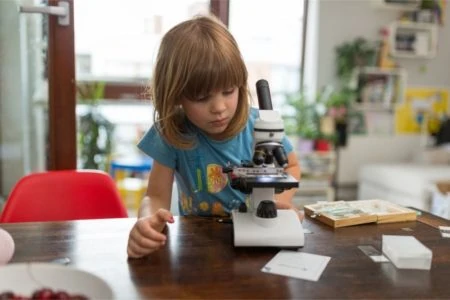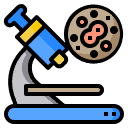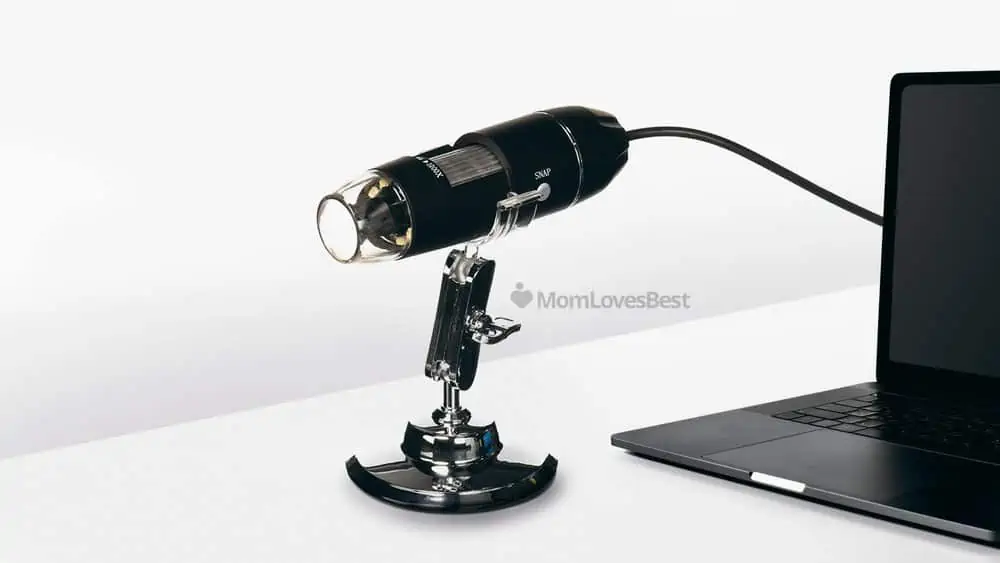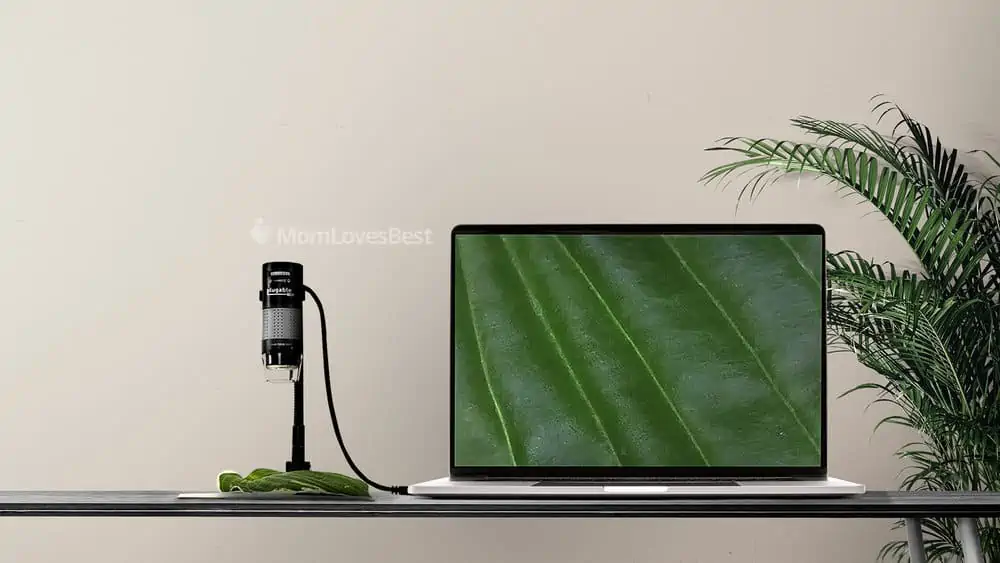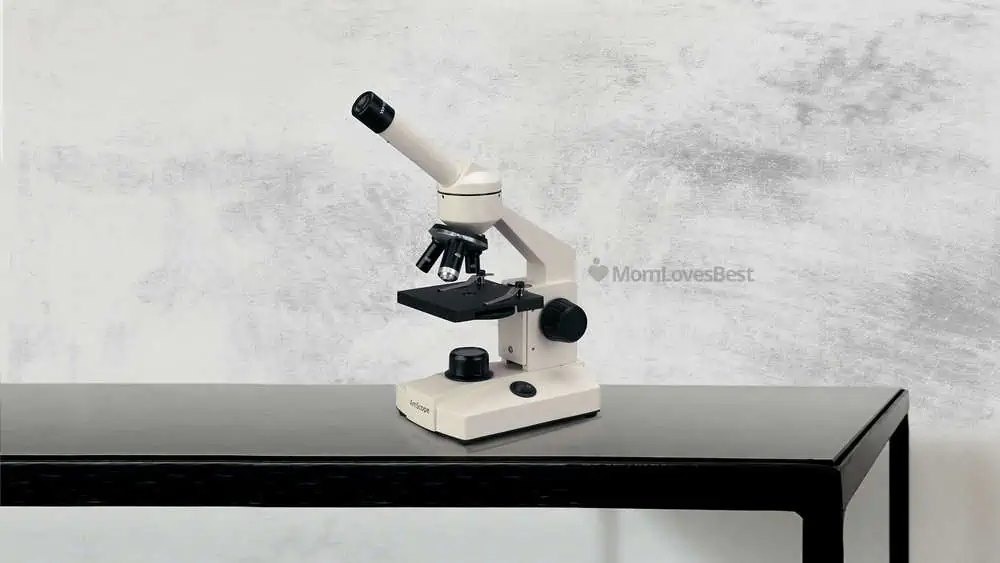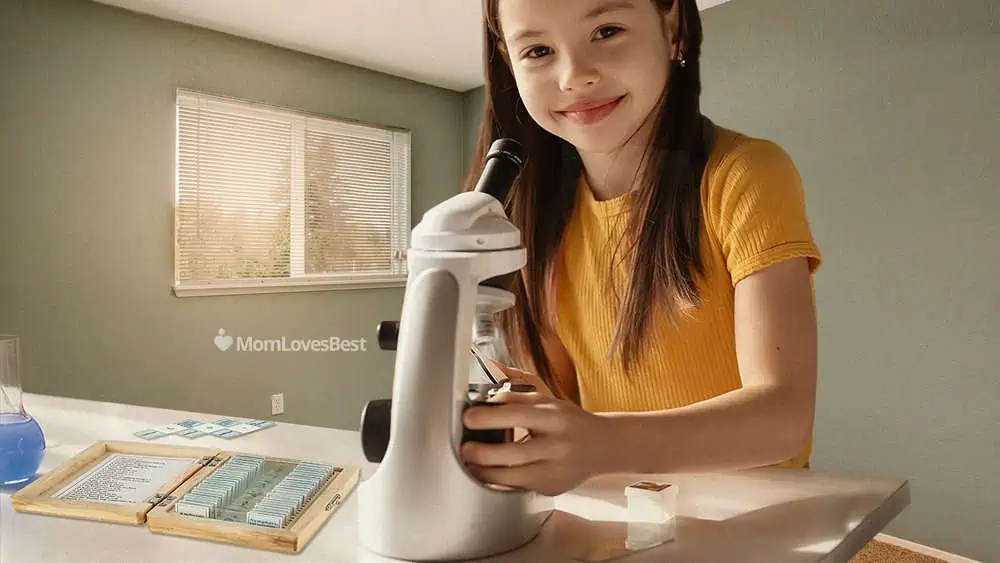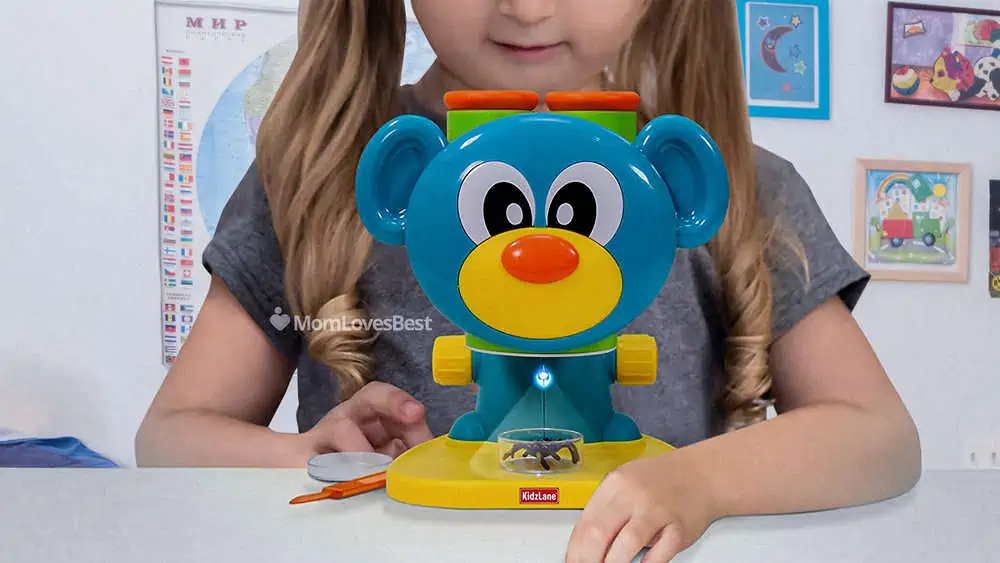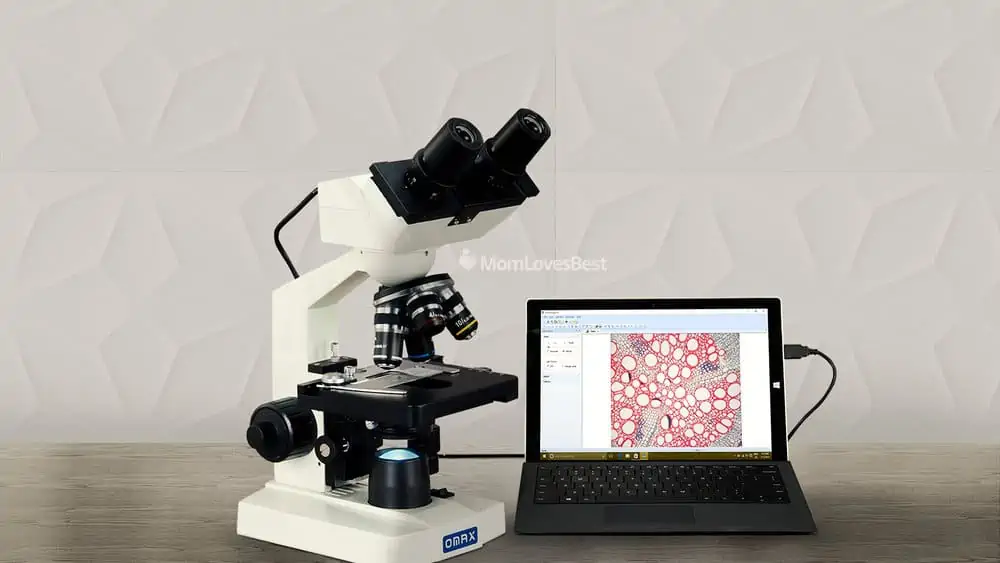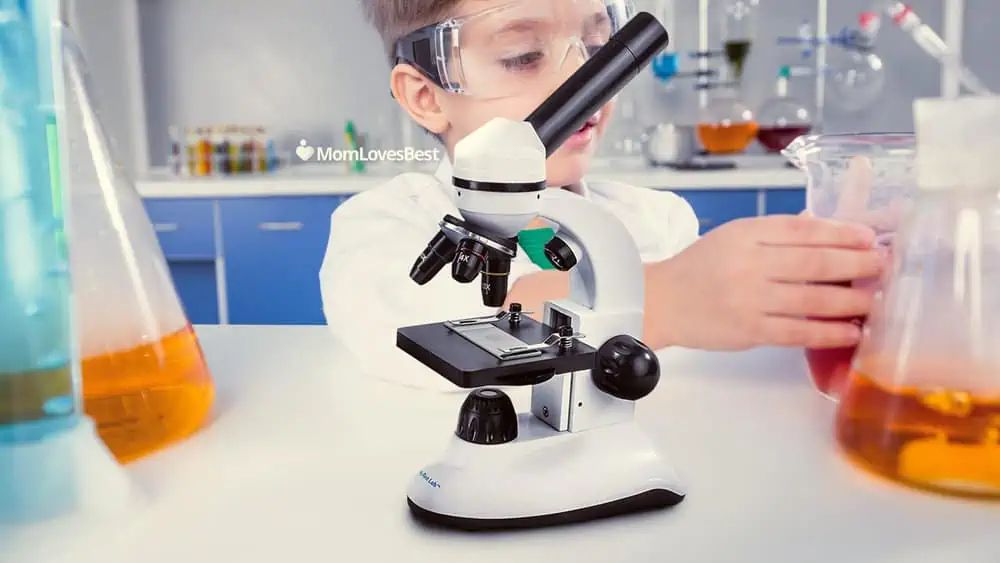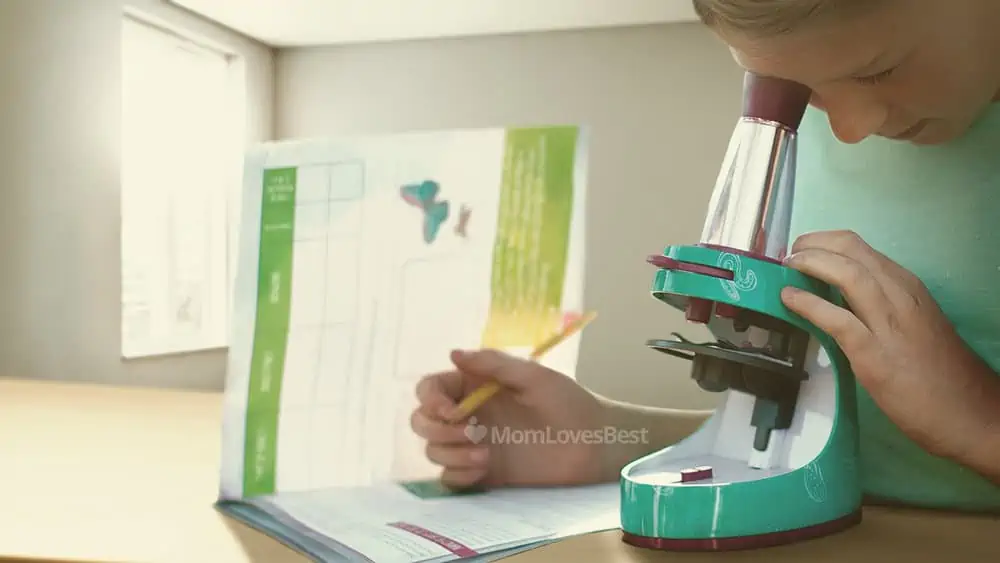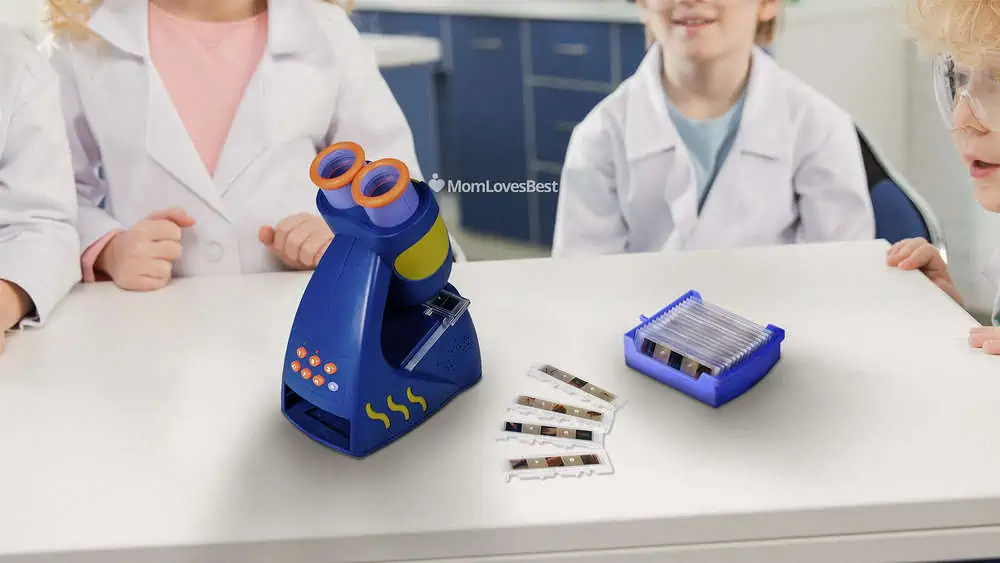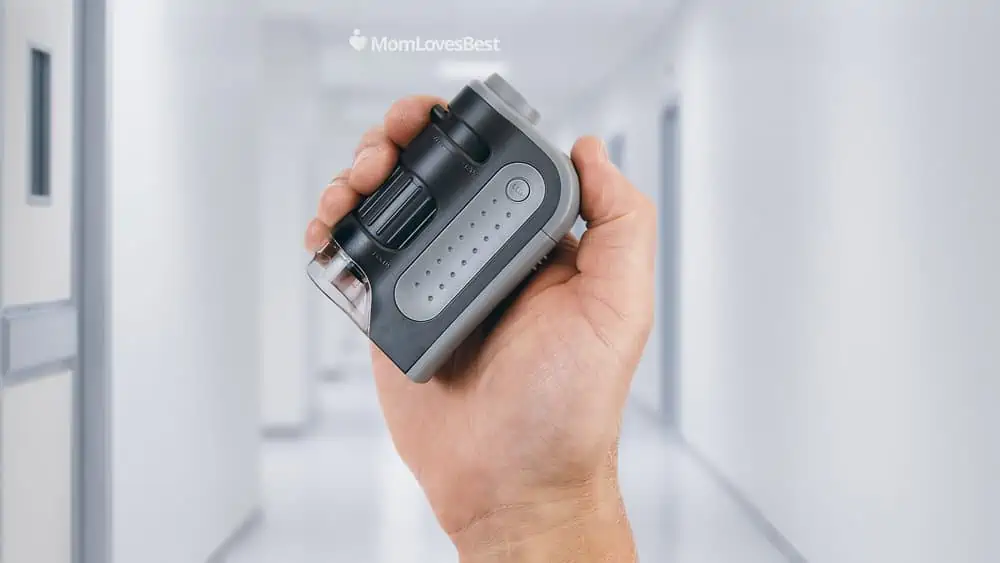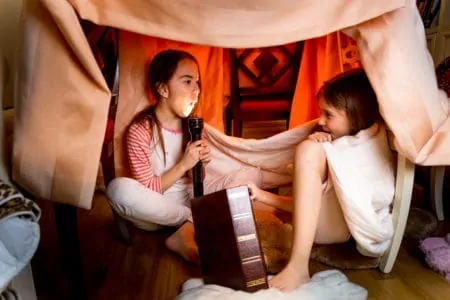Is your child begging for a microscope to explore the hidden details of the world? If you haven’t touched a slide since high school biology, knowing what to buy can be tricky.
We made it simple. We studied the best microscopes for kids to explain exactly how they work and which features actually matter. You don’t want a toy that breaks in a week; you want a tool that sparks curiosity.
We reviewed the top ten microscopes for every age group. These picks are durable, affordable, and offer high-quality optics to help your little scientist explore.
Read on to find the perfect fit for your family.
- Adjustable LED illumination
- Intelligent focus function
- Multiple operating systems
- Sturdy metallic frame
- 360-degree monocular head
- Works well with batteries
- Accessories included
- Soft frame eyecups
- Whimsical monkey design
- Fine and coaxial focus knobs
- Offers full movement
- High magnification of up to 2,000x
- 2-in-1 light and dissecting microscope
- Accessories included
- Activity journal included
- Multilingual audio
- Operates with batteries
- Comfortable eyepieces
- Lightweight and portable
- Aspheric lens system
- LED illumination
How to Choose a Microscope for Kids
Not all microscopes are created equal. You need to look past the colorful packaging and focus on the optics and build. Here is what matters most.
Types of Microscopes for Kids
Understanding the difference between the main types of microscopes will save you from buying the wrong tool.
Product Reviews
We tested the market to find high-quality optics for every age group. Here are our top picks.
Eleay Digital Mini USB Microscope
Best USB Microscope for Kids
This digital microscope offers a magnification range of 0x to 1000x, allowing your child to dive deep into the micro-world. Instead of squinting through an eyepiece, your child connects this to a device to see everything on a large screen. It features eight adjustable LED lights to ensure the subject is perfectly lit.
The USB Type-C connection works with smartphones, PCs, and laptops across multiple operating systems. The build mixes metal and plastic, making it durable enough for enthusiastic young scientists.
The standout feature is the one-touch photo button. Kids can snap 30MP images instantly. It is an affordable way to bridge technology and biology.
Pros
- Adjustable LED illumination.
- Intelligent focus function simplifies viewing.
- Compatible with multiple operating systems and devices.
- Includes a tripod for steady viewing.
Cons
- Does not include a storage case.
Our Ratings
Plugable USB 2.0 Microscope
Best Digital Microscope for Kids
Digital microscopes are incredibly efficient for classroom exploration and fun experiments. This USB model is a favorite because of its flexible arm stand. You can position it at any angle over any object, which is great for awkward items like large rocks or flowers.
The rugged plastic body holds a 2MP camera with a magnification range up to 250x. While that sounds lower than others, the optical quality is solid for the price.
It features four dimmable LEDs and a CMOS sensor. You can place it directly on a subject for high-resolution inspection or hold it by hand for point-and-click fun.
Pros
- Flexible stand allows for versatile positioning.
- Works with Windows, Mac, and Linux.
- 4-foot cable gives you room to move.
- Includes a quick-start guide.
Cons
- Maximum resolution is limited to 2MP.
Our Ratings
AmScope Cordless LED Compound Microscope
Best Microscope for Tweens
If your tween is serious about science, this is a real lab tool, not a toy. It features a durable metal frame and a 360-degree rotatable monocular head, making it easy to share the view with a lab partner.
With five magnification settings ranging from 40x to 1000x, it provides the power needed to see cell walls and bacteria. The glass optics are high quality, featuring a single-lens condenser and disc diaphragm to control lighting contrast.
The LED system can run on a standard outlet or three AA batteries, making this fully portable for field trips to the backyard.
Pros
- Sturdy all-metal frame.
- 360-degree rotating head.
- Bright LED illumination.
- Portable battery power option.
Cons
- Customer service can be slow to respond.
Our Ratings
AmScope Assorted Prepared Glass Slides
Best Microscope Slides
A microscope is only as good as the things you look at. This set includes 25 prepared glass slides featuring various specimens like insect legs, plant stems, and animal tissues.
The samples are preserved in cedar wood oil and sealed to prevent contamination or decay. Every slide is clearly labeled, so your child knows exactly what they are examining.
This set comes in a wooden storage case, keeping the glass safe. It is the perfect add-on gift to ensure your child has something cool to look at the moment they open their microscope.
Pros
- Slides are clearly labeled.
- Professionally prepared specimens.
- Includes a durable wooden storage case.
Cons
- Occasional quality control issues with slide cleanliness.
Our Ratings
Kidzlane Microscope Science Toy
Best Microscope for Toddlers
This is the ultimate starter toy for toddlers. It comes loaded with accessories, including a petri dish, tweezers, and pretend specimens like a spider and lizard.
The 8x magnification is gentle enough for young eyes to process without getting dizzy. It helps develop motor skills as they learn to turn the large, easy-to-grip focus wheel. The binocular eyepiece (two eyes) is much more comfortable for toddlers than closing one eye.
The frame features a fun monkey design and soft eyecups for safety. While the “specimens” are fake, your child can easily place real leaves or rocks under the light to explore.
Pros
- Includes fun accessories and “specimens.”
- Comes with an activity guidebook.
- Soft eyecups protect little faces.
- Whimsical design makes science approachable.
Cons
- Low magnification means they will outgrow it quickly.
Our Ratings
Omax Digital LED Compound Microscope
Best Microscopes for Teens
This OMAX model is a powerhouse. With magnification up to 2000x, it serves students well into high school and college. It features four objectives (4x, 10x, 40x, 100x) and superb optics.
It includes both coarse and fine focus knobs, which are essential for high-magnification clarity. The LED light intensity is adjustable, giving you control over image contrast.
The double-layered mechanical stage allows for precise movement of the slide without touching it. It also features a built-in 1.3MP camera compatible with Mac and Windows, so students can snap photos for their lab reports.
Pros
- Coaxial coarse and fine focus knobs.
- High magnification up to 2000x.
- Built-in digital camera.
- Mechanical stage for precise control.
Cons
- Higher price point than standard kid scopes.
Our Ratings
My First Lab Duo-Scope
Best Beginner Microscope
If you can’t decide between a compound scope (for slides) and a stereo scope (for solid objects), get this. The Duo-Scope does both. It is perfect for children 9 years and up.
It features dual LED lighting. Use the bottom light to see through slides, or switch to the top light to look at a coin, a rock, or a bug. This versatility keeps kids engaged longer.
The kit includes 50 accessories, such as prepared slides, stains, a test tube, and a petri dish. It uses high-quality glass optics rather than plastic, ensuring clear images. It runs on three AA batteries, making it great for outdoor exploration.
Pros
- Dual-light system works for slides and 3D objects.
- Huge accessory kit included.
- Award-winning glass optics.
- Lightweight and portable.
Cons
- Setup requires some parental assistance.
Our Ratings
Educational Insights Nancy B’s Microscope
Best Budget Microscope for Kids
This stylish scope proves you don’t need to spend a fortune to get started. It’s a dual-function microscope, offering 30x, 100x, and 400x magnification.
Designed for kids ages 8 and up, it comes with 26 tools including tweezers and specimen vials. The dual LED lights allow for viewing both transparent slides and solid objects.
The highlight is the included 22-page activity journal. It guides kids through real science experiments, turning the microscope from a simple toy into a structured learning experience.
Pros
- Dual-light capability.
- Includes 26 scientific tools.
- Activity journal encourages structured learning.
Cons
- Optics can get blurry at max magnification.
Our Ratings
Educational Insights GeoSafari Jr. Talking Microscope
Best Microscope for Preschoolers
This interactive toy uses the voice of Bindi Irwin to guide your child through nature facts. It provides 5x magnification and focus-free dual eyepieces, perfect for a 4-year-old who just wants to see cool stuff.
It works like a View-Master; kids insert slides featuring high-quality images of animals and plants. They listen to facts and then can switch to “Quiz Mode” to test their memory.
It comes with 20 slides containing over 100 facts. The slides store neatly inside the microscope, so you won’t find them scattered all over the floor.
Pros
- Multilingual audio options.
- Fact and Quiz modes keep kids engaged.
- Battery-operated and portable.
- Comfortable fit for small faces.
Cons
- It is a slide viewer, not a functional microscope.
Our Ratings
Carson MicroBrite Plus Microscope
Best Pocket Microscope for Kids
The Carson MicroBrite puts the lab in your pocket. It is tiny, lightweight, and surprisingly powerful, boasting a 60x to 120x magnification range.
It uses an internal aspheric lens system to keep the image sharp and distortion-free. The built-in bright LED ensures you can see details even in dim lighting.
Because of the high power and short focal distance, you place the scope directly onto the object. It is perfect for hiking trips, allowing kids to examine fabric, leaves, or bugs right where they find them.
Pros
- Extremely portable and lightweight.
- Aspheric lens system prevents distortion.
- Bright LED light included.
Cons
- Field of view is very small; requires steady hands.
